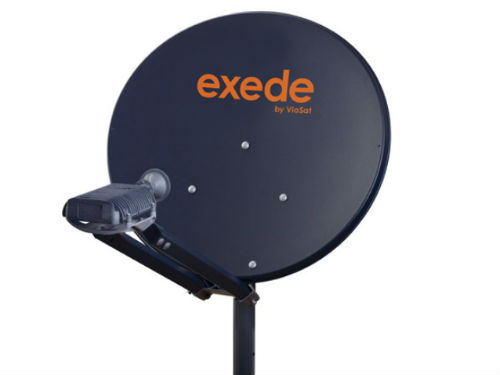ViaSat Sheds Satellite Broadband Subs in Q2

ViaSat’s consumer satellite broadband business remained under pressure in fiscal Q2 as the company lost customers and continued to be dogged by bandwidth issues as it looks to relieve that situation early next year when a new high-capacity satellite enters service.
ViaSat ended the period with 589,000 residential subscribers, down 36,000 from the 625,000 it had at the end of its fiscal Q1.
RELATED: EchoStar Hughes Unit Adds 53K Satellite Broadband Subs in Q3
“Our consumer business continues to be constrained by available bandwidth on ViaSat 1 and the legacy satellites, as well as by growth and bandwidth usage in our in-flight connectivity and government applications,” ViaSat CEO Mark Dankberg said Wednesday (Nov. 8) on the company’s earnings call.
But a remedy is in play.
ViaSat 2, launched in June from French Guiana, packs 300 Gbps of total throughput, opening the door for ViaSat to offer speeds to individual subs of 100 Mbps or more. The new satellite is expected to enter service in February 2018. In preparation, ViaSat has begun to test several new service plans, including a range of unlimited data plans.
RELATED: ViaSat 2 Launches With Big Broadband Potential
The smarter way to stay on top of the multichannel video marketplace. Sign up below.
“We know when ViaSat 2 enters service, about three months from now…we’ll go from being bandwidth-constrained to a bandwidth-rich environment,” Dankberg said.
He noted that ViaSat has seen demand skew toward higher-priced, higher-speed plans that offer more data usage, driving ARPU up to record levels, and up 9% year-on-year. Its current top-end service, under the “Exede” brand, pumps out up to 25 Mbps in the downstream direction, and implements a broadband-usage policy to keep bandwidth usage in check.
However, churn is also going higher than historical norms, driven by the aforementioned bandwidth constraints.
RELATED: Looking For Powerful Liftoff (subscription required)
“Migrations to newer plans by existing subscribers is obviously closely related to acquiring new ones,” Dankberg said. “We believe that these early migrations will offset subsequent migrations on ViaSat-2 service launch later this fiscal year.”
Dankberg also said that satellite broadband is increasingly well-positioned to support OTT services, including a new mix of live TV options that require more capacity than SVODs like Netflix, and suggested further that the future “may involve partnering with one or more of those service providers.”
RELATED: New Hughes/EchoStar Satellite to Deliver 100 Mbps-Plus
Even before the new bird enters service, ViaSat is also starting to reap some benefits from the capacity it will gain with ViaSat 2. The company also announced that an expanded deal to provide upgraded in-flight internet service to JetBlue aircraft.
The new JetBlue agreement factors in access to ViaSat 2 and a ViaSat 3 project that’s in development. ViaSat 3 will give the company global coverage from a set of satellites, the first of which that will enhance coverage in the Americas and launch in 2019. ViaSat will follow with a satellite covering the EMEA region in 2020, and another that will provide coverage in the Asia Pacific.
With respect to ViaSat’s agreements with JetBlue and others, Dankberg said the company has 576 aircraft in service, and 833 additional under contract.
“We're actively engaged with additional airlines, and expect our progress and investments to generate additional momentum over the rest of this fiscal year,” he said. “Overall, we see more and more airlines understanding that the more passengers that use in-flight connectivity, the better, and that's a great environment for us.”
ViaSat posted Q2 revenues of $399.2 million, down 1.5% year-on-year, and a net loss of $11 million. Satellite services were flat year-on-year accounting for a $6.6 million payment tied to a settlement with Space Systems Loral.
